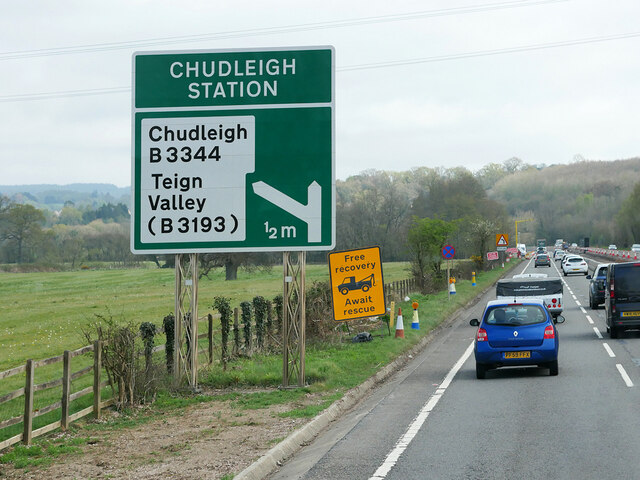Gappah Brake
Wood, Forest in Devon Teignbridge
England
Gappah Brake

Gappah Brake, located in Devon, England, is a beautiful woodland area known for its serene and picturesque setting. Situated in the larger region of Dartmoor National Park, this woodland is particularly notable for its dense concentration of trees, making it an ideal location for nature lovers and outdoor enthusiasts.
Covering an area of approximately 200 acres, Gappah Brake is characterized by a variety of tree species, including oak, birch, and beech trees, which create a captivating and diverse landscape. The forest floor is covered with a rich carpet of ferns, moss, and wildflowers, adding to the enchanting atmosphere.
The woodland is crisscrossed by a network of well-maintained trails, allowing visitors to explore the area easily. These trails range from leisurely strolls to more challenging hikes, catering to different fitness levels and preferences. Along the way, visitors can encounter a range of wildlife, including squirrels, rabbits, and various bird species. The forest is also home to an array of plant life, including rare orchids and ancient ferns.
Gappah Brake is a popular destination for outdoor activities such as walking, hiking, and birdwatching. The tranquil environment provides a welcome escape from the hustle and bustle of city life, offering visitors a chance to reconnect with nature. The forest is open to the public year-round, with stunning displays of autumn colors and vibrant spring blooms being particularly popular among visitors.
Overall, Gappah Brake offers a serene and captivating woodland experience, providing a peaceful retreat for nature enthusiasts and those seeking a tranquil escape in the heart of Devon.
If you have any feedback on the listing, please let us know in the comments section below.
Gappah Brake Images
Images are sourced within 2km of 50.582683/-3.6095534 or Grid Reference SX8677. Thanks to Geograph Open Source API. All images are credited.









Gappah Brake is located at Grid Ref: SX8677 (Lat: 50.582683, Lng: -3.6095534)
Administrative County: Devon
District: Teignbridge
Police Authority: Devon and Cornwall
What 3 Words
///countries.channel.chromatic. Near Chudleigh Knighton, Devon
Nearby Locations
Related Wikis
Teignbridge
Teignbridge is a local government district in Devon, England. Its council is based in the town of Newton Abbot. The district also includes the towns of...
Olchard
Olchard is a village in Devon, England.
Chudleigh railway station
Chudleigh railway station was a railway station in Chudleigh, a small town in Devon, England located between the towns of Newton Abbot and Exeter. The...
Stokelake
Stokelake Residential School was in Chudleigh, South Devon. It was classed as the senior school of Pitt House School Ltd and the chairman was Mr. M. C...
Nearby Amenities
Located within 500m of 50.582683,-3.6095534Have you been to Gappah Brake?
Leave your review of Gappah Brake below (or comments, questions and feedback).










